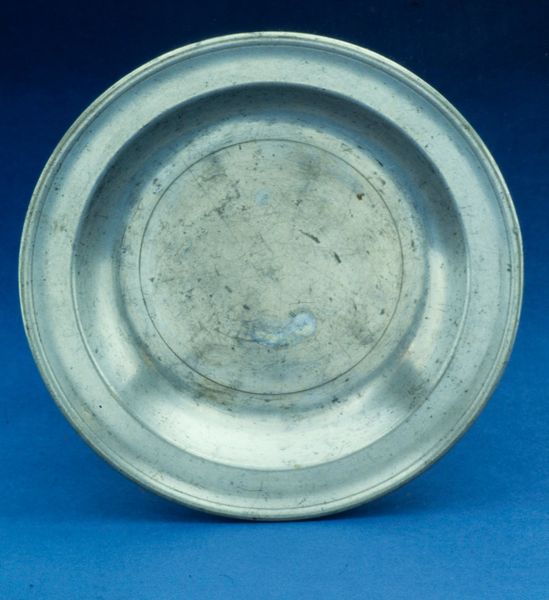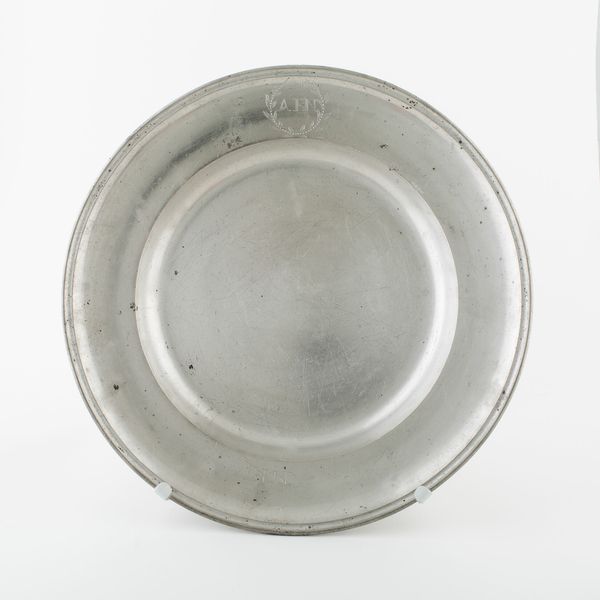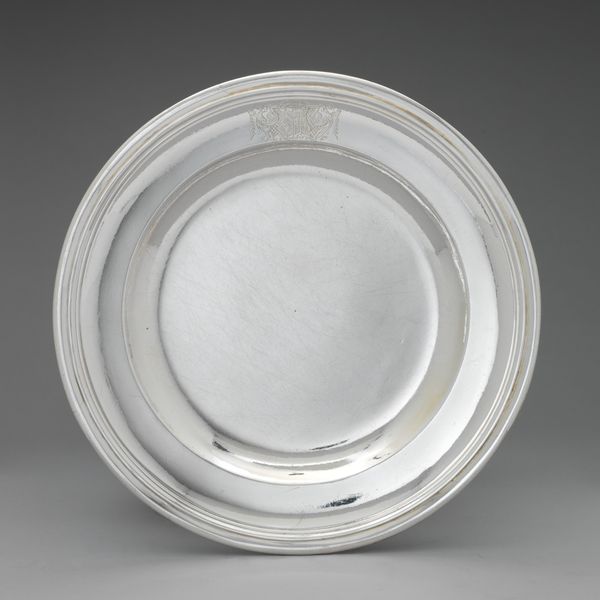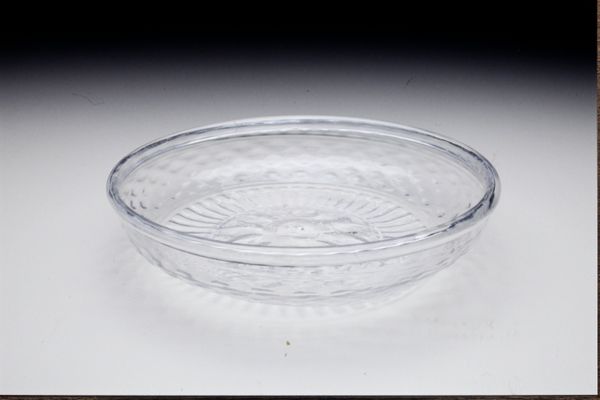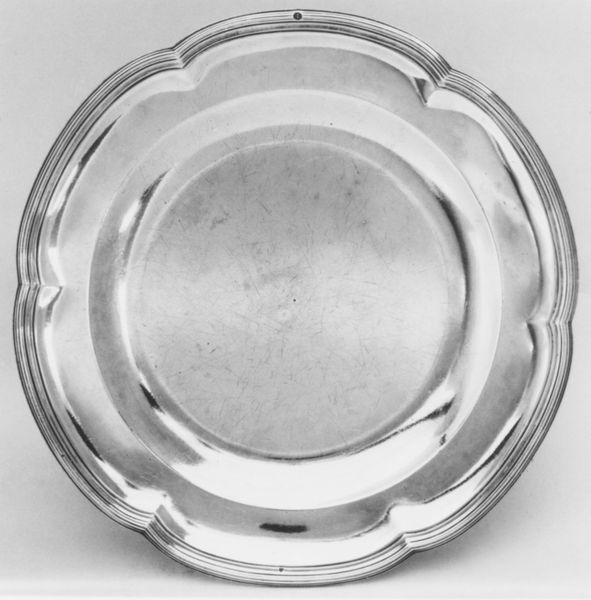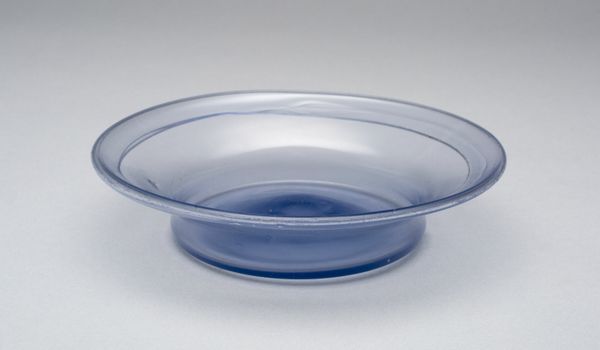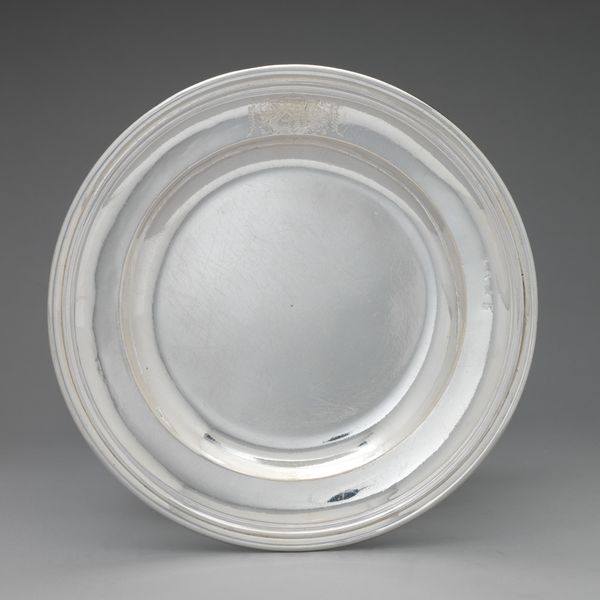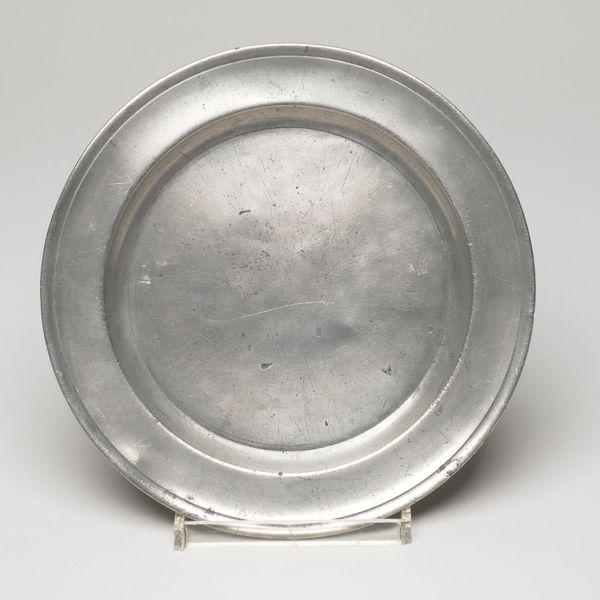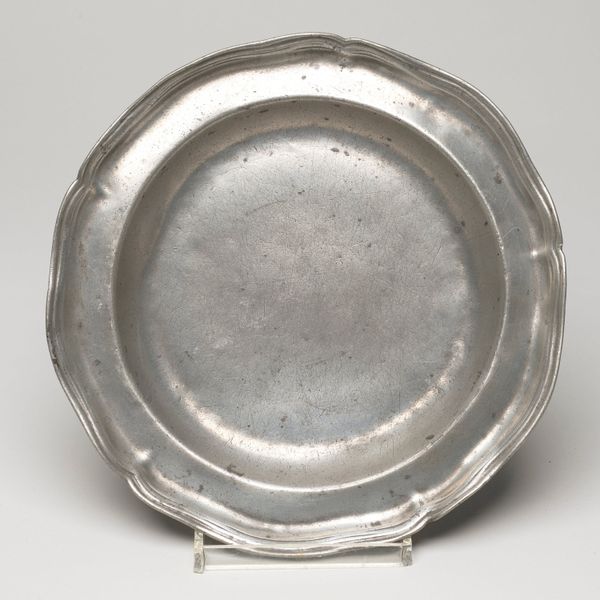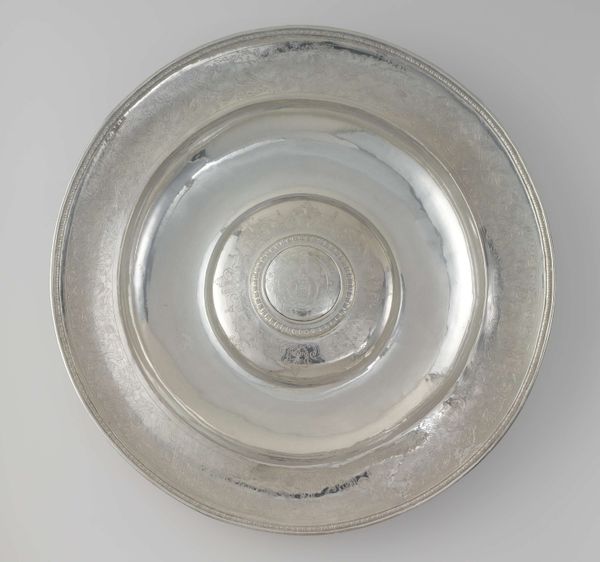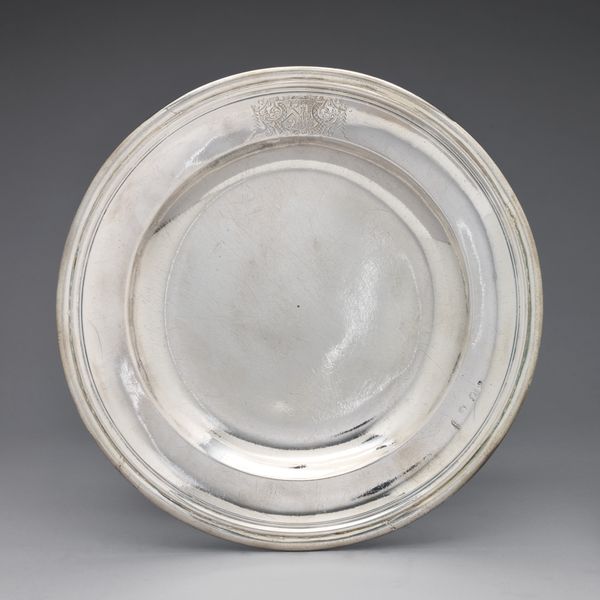
metal
#
metal
#
decorative-art
Copyright: Public Domain
Editor: Here we have an 18th-century metal charger. It is humble in its form. Very round, a little scratched. How can an everyday object like a plate reflect cultural values? Curator: This charger embodies a sense of utilitarian elegance that was deeply valued. While seemingly simple, the form is timeless. Its very roundness signifies wholeness and community. It reminds us of the essential shared rituals, like breaking bread together. What do you notice about its surface? Editor: Well, it is quite reflective, almost like a mirror. Curator: Exactly! Consider this reflective quality. At the dinner table, as it reflected the faces of those gathered, what stories do you think it might have silently held? Think of the expressions it mirrored, the hushed conversations, and the memories formed around it. Doesn't it whisper of continuity? Editor: That’s so interesting! I was caught up on how simple it looks, but you’re right. As a communal object, it has layers of untold narratives attached to it. Like visual mnemonics. Curator: Indeed. We tend to overlook objects like these. But by considering their symbolism we acknowledge their importance. Each charger, each place setting, acting as a stage for everyday performance. Each with its own narrative contribution. Editor: I'll definitely be looking at simple things in museums differently from now on, imagining their place in a bigger cultural memory. Thank you. Curator: My pleasure. Every object bears cultural information, if we learn how to listen.
Comments
No comments
Be the first to comment and join the conversation on the ultimate creative platform.
